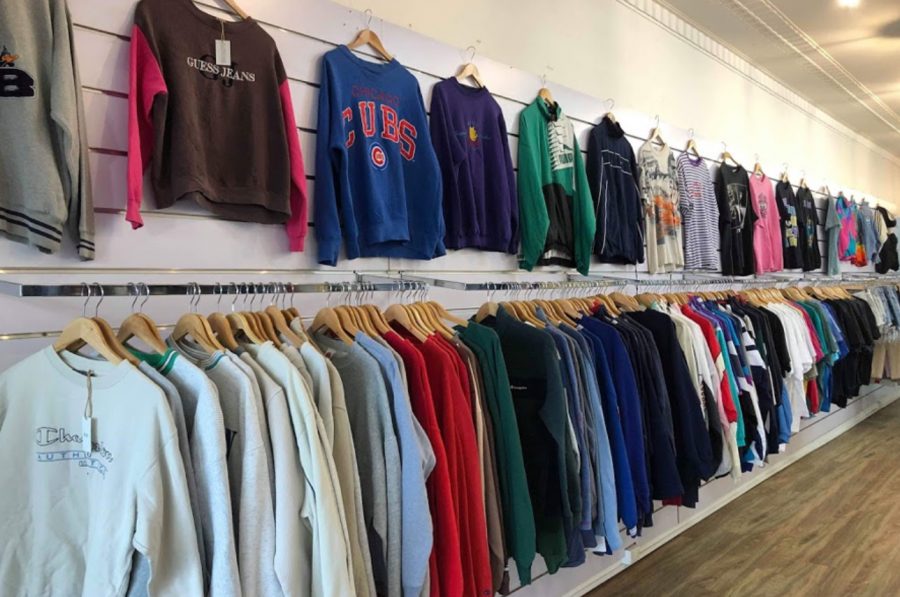Saving the Environment in a Fashionable Way
The benefits of thrifting/upcycling your clothes
Last updated October 15, 2021
If you’re looking for some way to help the environment or just looking something fun to do with your friends, thrifting is the way to go.
Thrift shopping has gained popularity in recent years, almost becoming a trend. The adventure of searching for cute, cheap clothes is exciting, plus thrifting is super sustainable.
These days, keeping up with the newest trends is seemingly impossible because current trend cycles barely last for a few months. People will buy a bunch of clothes to fit whatever is “in” and will throw it out as soon as the new style is trending. This creates massive amounts of waste.
According to the Huffington Post, the average American throws out 81 pounds of clothes every year which equates to 26 billion pounds in total. Landfills are overflowing with our waste, and this can easily be avoided by donating your clothes or giving them to a second-hand store.
Sophomore Asher Rawlins said she got into thrifting because she likes variety and a hint of nostalgia. “I like being able to find really cool items that I wouldn’t be able to find at regular stores. It’s as if every piece has a different story,” said Rawlins.
Our oceans are also being harmed by our clothing waste. The ocean is home to 50-80% of life on earth so we need to protect it! Most clothing today is made from polyester which does not decompose in water. The waste that ends up in the oceans pollutes and harms the environment.
Additionally, the fashion industry is the second-largest consumer of the world’s water supply. According to the GRACE Communications Foundation, who run watercalculator.org, it takes 650 gallons of water to produce one cotton t-shirt and 1,800 gallons of water to produce a pair of jeans. By recycling our clothes, we can stop the unnecessary production of textiles that can be reused and recycled, and we can save water at the same time.
Finally, the fashion industry is also one of the world’s largest air polluters. An insider article estimates that the industry produces 10% of all humanity’s carbon emissions. Reducing air pollution can help with health issues as well as climate change.
Victor Berg (‘24) siad, “Learning about the environmental impacts of fast fashion and buying clothes first hand caused me to start buying second hand to reduce carbon emissions and combat climate change on a personal level.”
So, next time you clean out your closet, consider giving your clothes to a second-hand store. You are not only reducing waste but allowing someone else to give your clothes new life!

